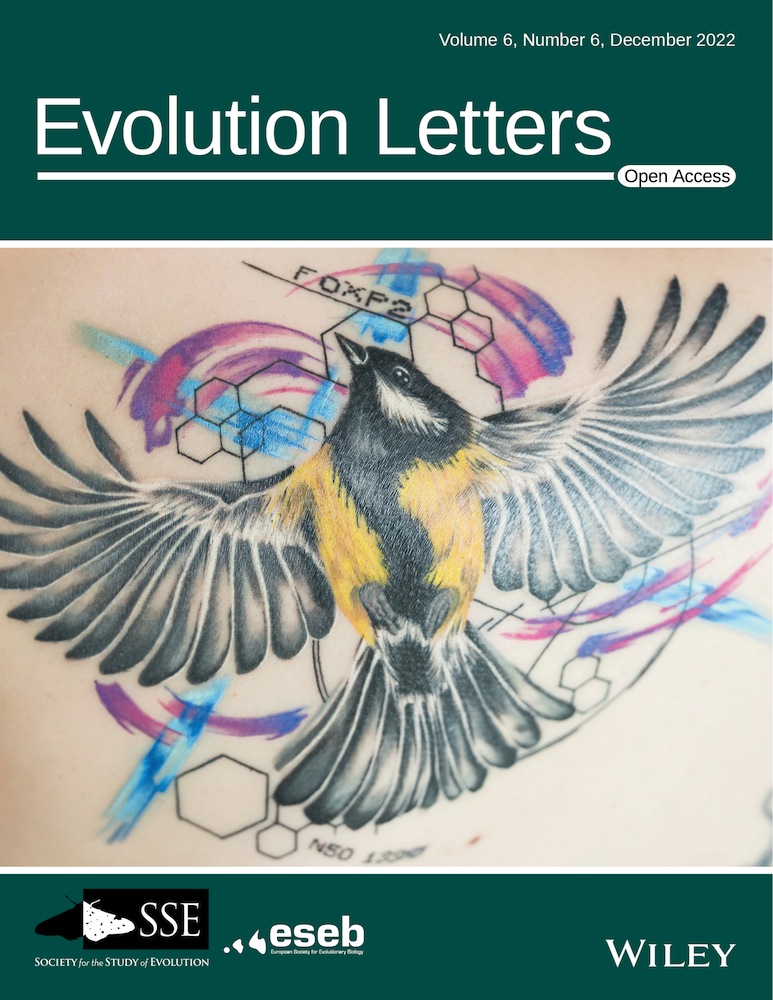Commonly used Bayesian diversification methods lead to biologically meaningful differences in branch-specific rates on empirical phylogenies
IF 3.7
1区 生物学
Q2 EVOLUTIONARY BIOLOGY
引用次数: 0
Abstract
Abstract Identifying along which lineages shifts in diversification rates occur is a central goal of comparative phylogenetics; these shifts may coincide with key evolutionary events such as the development of novel morphological characters, the acquisition of adaptive traits, polyploidization or other structural genomic changes, or dispersal to a new habitat and subsequent increase in environmental niche space. However, while multiple methods now exist to estimate diversification rates and identify shifts using phylogenetic topologies, the appropriate use and accuracy of these methods are hotly debated. Here we test whether five Bayesian methods—Bayesian Analysis of Macroevolutionary Mixtures (BAMM), two implementations of the Lineage-Specific Birth–Death–Shift model (LSBDS and PESTO), the approximate Multi-Type Birth–Death model (MTBD; implemented in BEAST2), and the Cladogenetic Diversification Rate Shift model (ClaDS2)—produce comparable results. We apply each of these methods to a set of 65 empirical time-calibrated phylogenies and compare inferences of speciation rate, extinction rate, and net diversification rate. We find that the five methods often infer different speciation, extinction, and net-diversification rates. Consequently, these different estimates may lead to different interpretations of the macroevolutionary dynamics. The different estimates can be attributed to fundamental differences among the compared models. Therefore, the inference of shifts in diversification rates is strongly method dependent. We advise biologists to apply multiple methods to test the robustness of the conclusions or to carefully select the method based on the validity of the underlying model assumptions to their particular empirical system.常用的贝叶斯多样化方法导致经验系统发育中分支特异性率的生物学意义差异
确定谱系在多样化率上发生的变化是比较系统遗传学的中心目标;这些转变可能与关键的进化事件相吻合,如新的形态特征的发展,适应性特征的获得,多倍体化或其他结构基因组变化,或向新栖息地的扩散以及随后环境生态位空间的增加。然而,尽管目前存在多种方法来估计多样化率并利用系统发育拓扑学识别变化,但这些方法的适当使用和准确性仍存在激烈的争论。本文测试了五种贝叶斯方法——宏观进化混合贝叶斯分析(BAMM)、两种特定谱系的出生-死亡-转移模型(LSBDS和PESTO)、近似多类型出生-死亡模型(MTBD);在BEAST2中实现的)和枝生多样化速率转移模型(ClaDS2) -产生类似的结果。我们将这些方法分别应用于65个经时间校准的系统发生,并比较了物种形成率、灭绝率和净多样化率的推论。我们发现这五种方法通常推断出不同的物种形成、灭绝和净多样化率。因此,这些不同的估计可能导致对宏观进化动力学的不同解释。不同的估计可归因于所比较模型之间的根本差异。因此,多样化率变化的推断是非常依赖于方法的。我们建议生物学家采用多种方法来测试结论的稳健性,或者根据潜在模型假设对其特定经验系统的有效性仔细选择方法。
本文章由计算机程序翻译,如有差异,请以英文原文为准。
求助全文
约1分钟内获得全文
求助全文
来源期刊

Evolution Letters
EVOLUTIONARY BIOLOGY-
CiteScore
13.00
自引率
2.00%
发文量
35
审稿时长
10 weeks
期刊介绍:
Evolution Letters publishes cutting-edge new research in all areas of Evolutionary Biology.
Available exclusively online, and entirely open access, Evolution Letters consists of Letters - original pieces of research which form the bulk of papers - and Comments and Opinion - a forum for highlighting timely new research ideas for the evolutionary community.
 求助内容:
求助内容: 应助结果提醒方式:
应助结果提醒方式:


